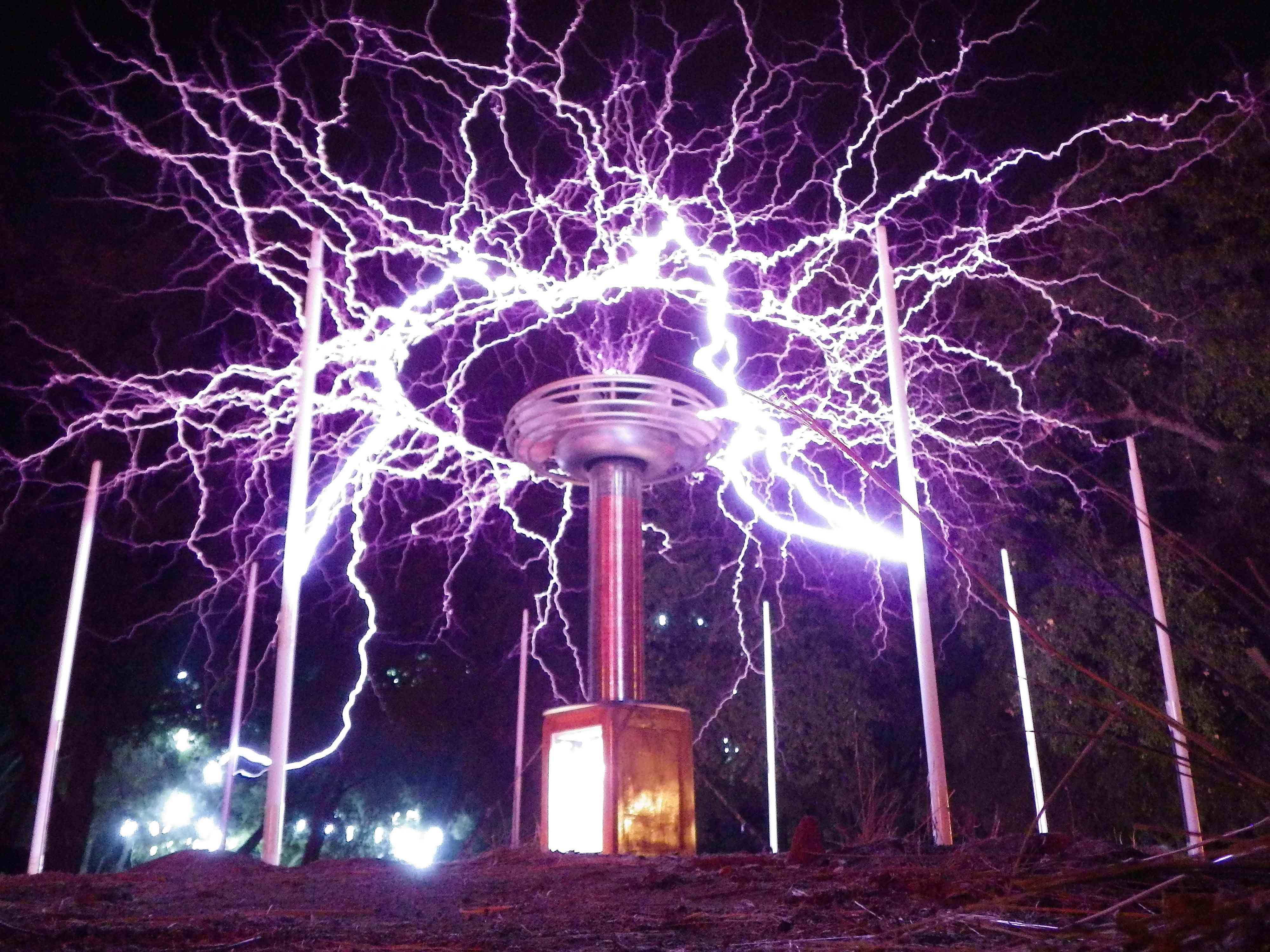The wireless transfer of electrical power is a technological concept that has been around since the late 19th century. However, this technology was never fully developed for commercial use, and after the death of its discoverer, Nicola Tesla, it became obsolete for almost a century. This technology was finally revived in the year 2007 by an MIT professor who discovered HRWPT (High Resonance Wireless Power Transfer), and founded a company that is currently working towards the mass commercial implementation of this new technology, which will shape the next generation of electronics.
Introduction
Have you ever found your phone out to be out of battery without a charger around? Ever had any other devices need a wall socket, only to not find any nearby? If you are a human being of the 21st century, then wires have probably posed a challenge at one point or another. Now, imagine a world where things don’t have to be plugged into the wall and electricity simply travels through the air. This may sound crazy, but since electricity does travel through the air in the form of electric and magnetic fields, it can actually be converted to power for everyday use.
Wireless power transfer is not a new discovery; in fact, Nikola Tesla, Thomas Edison’s contemporary and archrival, created devices that could transfer electrical power wirelessly in the late 19th century [1]. In 2007, a team of MIT students revisited the realms of wireless power transfer with a successful experiment, which consequently gave birth to WiTricity, the only corporation dedicated to making wireless power transfer available for consumers [2] [3].
The Past
When electrical power was just starting to become commercial in the US more than a hundred years ago, there was a big argument regarding which type of current would be commercially used; Edison and General Electric were supporters of low voltage DC, or Direct Current, while Tesla and George Westinghouse of Westinghouse Electric were supporters of high voltage AC, or Alternating Current. Throughout the years, Tesla developed various inventions that worked with AC; among these was the first device that could transfer electrical current wirelessly. Tesla continued conducting research in the field of wireless power transfer and actually came close to providing wireless power for the US public more than a century ago [4].
The Tesla Coil
Around 1891, Tesla invented the Tesla coil, the first device that could transfer electricity wirelessly. At the time, the device didn’t have many commercial applications besides wireless telegraphy, and it lacked popularity [5]. Tesla, however, saw the future potential of his technology in an ambitious intent to prove its importance to the world; he then built the Wardenclyffe Tower on Long Island, New York, which was essentially a huge Tesla coil and one of the world’s first wireless transmission stations. According to Tesla, the tower was going to have the ability to transmit electrical power wirelessly to a large percentage of the US population as well as telegraphy and telephony across the Atlantic Ocean. Unfortunately, shortly after the construction of his massive tower, Tesla was deprived of all his funding, which withheld him from ever completing his project [6]. The Wardenclyffe Tower was unfortunately demolished in 1917 for scrap without accomplishing anything similar to Tesla’s plans.
The technology behind the Tesla coil is actually quite simple. The basic design, displayed in Figure 1, merely consists of two circuits. The primary circuit, displayed in the left side of Figure 1, is composed of a transformer, which is a device that increases incoming voltage, a high voltage capacitor, which acts as a temporary battery that stores charge for short periods of time, and a copper coil that is connected to the capacitor by a spark gap, which creates a gap of air between two metal plates that are very close to each other. The secondary circuit, displayed on the right hand side of Figure 1, is composed of a second coil and a Torus, which is basically a metallic doughnut-shaped object. Both coils are grounded, and the first coil surrounds the second coil. A high voltage power source or a low voltage power source connected to the transformer feeds high voltage into the capacitor. Eventually, the capacitor gets filled with charge and it discharges through the spark gap into the first coil; this coil consequently transfers charge to the second coil through induction. The current goes back and forth from the first coil to the second coil until the voltage surpasses the terminal capacitance of the torus, which then discharges electric current. This current can be harvested, and Tesla was actually able to light up two fluorescent bulbs across the room with no wires [7].
The Present
Research on wireless power transfer began to lag soon after Tesla’s bankruptcy in the 1920’s, and humanity took a step backwards by adapting to the power cord [8]. Tesla’s work was basically ignored until 2007, when a group of MIT students led by Professor Marin Soljacic developed an experiment to transfer electricity wirelessly from a source to a device two meters away. The experiment consisted of two copper coils tuned to oscillate at the exact same frequency. One of the coils was hooked to a power source, and at a distance of two meters, the other coil was hooked up to a 60W light bulb. Eventually, the two coils ended up resonating or vibrating at the same frequency, which is the natural state at which energy can most easily be transferred in an oscillating system. At this point, electrical energy flowed out of the source, through the magnetic field, and into the device, lighting up the 60W bulb [9].
This experiment gave birth to the technology known as high resonance wireless power transfer or HRWPT, a more modern approach to Tesla’s technology, and eventually to a modern corporation called WiTricity [10]. Currently, this is the only corporation that is producing HRWPT technology for commercial availability.
Applications
High resonance wireless power transfer has a number of different applications in various fields. In essence, it will allow electronic devices to run without batteries or being connected to the wall socket as long as they are in range of a source. Besides being used at home to charge and power consumer electronics, or in the auto industry to charge electric automobiles, HRWPT will also revolutionize industrial, medical, and military equipment. A few of the potential functions HRWPT could have in these fields include: the wireless charging and use of power tools and remotely operated vehicles, charging implantable devices through a patient’s skin as well as hearing aids and other medical electronic devices, and wireless charging for mobile military equipment like robots, radios and computers.
WiTricity
WiTricity is an American corporation created by MIT professor Marin Souljacic with the sole purpose of making wireless power transfer available for the public. Currently, the company’s main focus is working alongside manufacturers in order to integrate WiTricity technology with current electronic devices and develop product-specific solutions. In efforts to accomplish this, the company launched WiCAD, their own software that allows users to incorporate algorithms that help with the design and simulation of complete resonant wireless power transfer circuits [11]. This will allow manufacturers and even small start-ups to utilize HRWPT in their own designs, prototypes and products.
The company currently sells three different products. The first product, Prodigy, is a basic kit made exclusively for the educational demonstration of the HRWPT phenomenon in schools and universities. Their second product, the WiT-5000, is another kit that helps to prototype hardware for the development of custom home applications such as charging stations for mobile phones, for example. This kit gives the customer the ability to adapt HRWPT to any desired electronic device or set of devices. The diagram of a basic WiT-5000 circuit is displayed in Figure 2; it is essentially the same circuit used in the 2007 experiment, except with a few additional elements like a Bluetooth transmitter. WiTricity’s third product, the WiT-3300, is specifically designed for today’s automobiles, specifically the wireless charging of electric and hybrid electric vehicles. Again, it gives the customer the flexibility to build a HRWPT circuit that specifically matches their desired vehicle and charging station, just like other applications.
Why It Matters
Wireless power transfer technology has large potential to benefit our society. It will make life easier by eliminating the need to plug in electronic devices, which will consequently make existing technology more useful. It will also open up room for both innovation of existing technology, which will no longer need power cords, and the creation of new technology. Aside from these benefits, wireless power transfer will also be helpful for the planet because disposable batteries, a very large source of pollution, will lose their purpose. Due to all these reasons and more, it seems likely that HRWPT will be widely implemented in the future.
The Future
In the future, all homes will have a large coil powered by some sort of renewable energy such as a high voltage solar array. Or maybe each city will have a huge Tesla coil like the Wardenclyffe Tower, which transmits power wirelessly to the entire city or even district. Electronic devices are all going to be cord-free and equipped with built-in device resonators making them capable of receiving power wirelessly. Automobiles are all going to be electric and roads are going to be built so that they wirelessly charge your automobile at stoplights. There will be breakthroughs in the industrial and medical fields with cordless and battery-free devices. Consumer electronics will also become even smaller without the need for batteries. These are only a few speculations though, so feel free to imagine your own Wireless World.
References
-
- [1] C.K. Lee & W.X. Zhong. (2012). Recent progress in mid-range wireless power transfer [online]. Available: http://hub.hku.hk/bitstream/10722/189863/1/Content.pdf?accept=1
- [2] M. Soljacic. (2007). Wireless Power Transfer [Online]. Available: http://www.mit.edu/~soljacic/wireless_power.html
- [3] The WiTricity Story. WiTricity Corporation [Online]. Available: http://witricity.com/technology/the-witricity-story/
- [4] N. Shinohara, “Wireless Power Transfer via Radio waves,” London: ISTE-Wiley, 2014.
- [5] The Tesla Coil [Online]. Available: http://www.pbs.org/tesla/ins/lab_tescoil.html
- [6] M. J. Seifer. “Nikola Tesla: The Lost Wizard.” ExtraOrdinary Technology Vol 4 No 1, (2006). Kingston, RI.
- [7] N. Tesla, “SYSTEM OF ELECTRIC LIGHTING” US patent 454,6 22. June 23,1891.
- [8] W. J. Broad, “A Battle to Preserve a Visionary’s Bold Failure,” The New York Times. May 4, 2009.
- [9] A. Kurs, A. Karalis, R. Moffatt, J. D. Joannopoulos, P. Fisher, M. Soljacic. (2007). Wireless Power Transfer via Strongly Coupled Magnetic Resonances [Online]. Available: http://www.sciencemag.org/content/317/5834/83.full.pdf?keytype=ref&siteid=sci&ijkey=94ff.Ay4jRMqU
- [10] F. Hadley. (2007, June) Goodbye wires…[Online]. Available: http://www.mit.edu/~soljacic/MIT_WiTricity_Press_Release.pdf
- [11] WiCAD, WiTricity Corporation [Online]. Available FTP: http://witricity.com/products/wicad/




